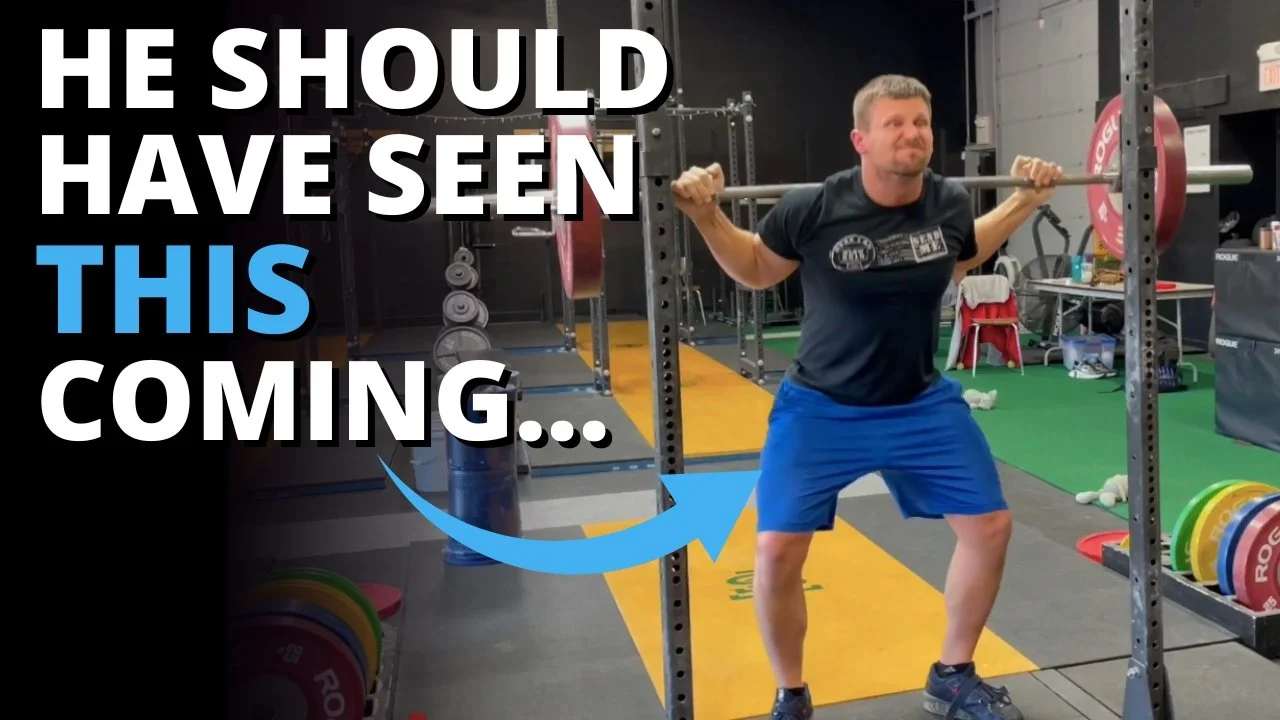10 TIPS to Help You DOMINATE the Starting Strength Squat
/Want to improve your squat? Of course you do, and with that in mind, here are 10 quick tips to help you achieve your goal.
You can also check out the included videos to see these tips in action.
1. Position
Position the barbell below your traps and resting on your delts. It’s a very secure position as it is trapped - pun intended - by your traps from above and supported by your delts from below.
2. Stance Width
Take your stance with heels at roughly shoulder width. This is an excellent width to help you hit depth in the squat - not too narrow and not too wide.
3. Toe Angle
Point your toes our roughly 30°. You will be directing your knees to travel in this direction as you descend, so your feet function as arrows for the knees (or equivalently, your femurs). Again, this is useful for hitting depth in the squat and allows your adductors to contribute to the ascent of the squat as well.
4. Focal Point
Focus on a spot roughly four to six feet in front of you on the floor. This helps with your back angle - it helps you point your chest down as you start your descent, and it helps you stay leaned over (and thus drive your hips) coming up out of the hole.
5. Breathing and Bracing
Before starting your descent, take a big breath, hold it, and clamp down on every muscle in your trunk - get tight like you’re going to be punched in the gut, and you’ll be doing a nice job of things. Hold that breath and tightness all the way down and all the way back up again until you finish the rep.
If the bar is moving - you’re not breathing.
6. Reach Back
As you start your descent, reach backward with your hips because . . .
7. Chest Down
. . . you’re going to point your chest at the floor as you descend, i.e., you’re going to lean over as you reach your hips back.
8. Knees Out
Additionally, as you descend, shove your knees out (i.e., apart from one another). Remember that your feet (specifically, your toes) are arrows for your knees, so your knees will travel forward and out in the same direction as your toes.
9. Hip Drive
When you hit the bottom of the squat (i.e., hip crease below the top of your patella), drive your hips up. Don’t think about driving your chest up. Drive your hips, and because you locked your back in rigid extension using tip #5, your chest and the bar will come up with your hips.
10. Stay in Your Lean
Stay leaned over a little longer than you think. You will “get vertical” eventually, i.e., your back angle will eventually become vertical (since you finish the squat in an upright position), but don’t try to get vertical right away as this makes makes for a weaker, harder, less efficient squat.
Stay in your lean.
As always, we hope this helps you get stronger and live better.
-Phil
PS: Whenever you want even more Testify in your life, here are some free resources:
Book a free intro and strategy session with us HERE.
Pick up a free copy of Testify’s Squat Guide: 12 Tips to Improve Your Squat Now HERE.
Get our free weekly email - containing useful videos, articles, and training tips - HERE.
Follow Testify on Instagram HERE.
Subscribe to Testify’s YouTube channel HERE.
(Some links may be affiliate links. As an Amazon Associate, Testify earns from qualifying purchases.)



